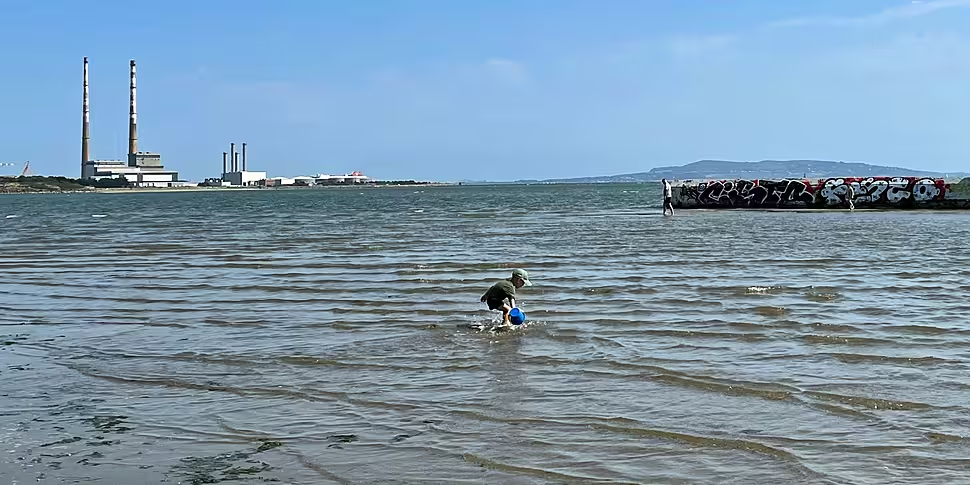The number of swimming restrictions imposed on Irish bathing locations this summer was triple what it was a decade ago.
A new study has found that there were 1,700 swimming restrictions at Ireland’s bathing spots this summer – up from just over 600 in 2014.
The Noteworthy investigation found that over half of the country’s 148 regulate bathing spots had restrictions this bathing season.
Report author Alice Chambers told Moncrieff that 20 of the bathing spots were restricted for more than a month.
“We found that actually rain was one of the biggest causes for that,” she said.
“Huge amount of rain creates runoff into the bathing waters and brings with it all kinds of bacteria from the land,” she said.
“That could be agricultural runoff, it could be things like dog faeces.”
Ms Chambers noted the increase in restrictions could also be because local authorities such as Dublin City Council are being more "proactive".
 People at Dollymount Strand. Image: NurPhoto SRL / Alamy Stock Photo
People at Dollymount Strand. Image: NurPhoto SRL / Alamy Stock PhotoIrish people are no stranger to rain, but Ms Chambers said it is the frequency of rain causing concerns in bathing water.
“The problem is that this was one of the wettest summers on record,” she said.
“You've got to triple the number of days with restrictions, but the number of days of bans - because there actually was pollution - also tripled, and that's because of rain and that's not going to get any better.
“We’ve got better at warning that rain is going to get increased because of climate change.”
Sewage is also a major contribution to water restrictions, particularly in areas with increased rainfall and treatment plants unable to deal with the increased amount of sewage.
Water restrictions
Ms Chambers explained there are two types of restrictions: when tests reveal water is polluted, and when there is enough of a risk that water will be polluted that local authorities pre-emptively restrict it.
“From a public health perspective, it gives people more information when they when they go to swim,” she said.
“But on the other hand, it does stop people from swimming - vulnerable people, the young, the elderly, people who have illnesses.”
Water quality
Dollymount Strand and Sandymount Strand were among the beaches with the highest restrictions, despite both beaches being classified as having “good water”.
In fact, Noteworthy found that bans were in place on days when Dublin City Council (DCC) reported samples showing ‘excellent’ quality water.
This contradiction is because water quality tests only test for two types of bacteria, while swimming restrictions can be due to increased rainfall and other conditions that make the water unsafe.
“Not all bathing waters are not tested every day,” Ms Chambers said. “There are other nasty things that might be in there
That's not a filter, that green colour is toxic algae at Keeldra Lough - the most restricted bathing spot in Ireland this summer.
Its bathing water was classed as ‘excellent’ all season but it wasn’t safe to swim for a lot of that time. Find out why: https://t.co/bAticb1vUJ pic.twitter.com/2zxvZvpMt0
— Noteworthy (@noteworthy_ie) October 19, 2023
Ms Chambers also said swimming restrictions might also be in place when water quality is "good" because of the kind of bacteria in the water, which Dublin City Council do not test for.
“Not all E Coli is created equal," she said. "Some amount of normal E Coli might be okay, but a low level of resistant E Coli might be a much bigger risk.
“We currently have no way of knowing what E Coli is in the water.”
Ms Chambers also noted the restriction tests don’t check for algae, which can impact how different waters are rated.
Listen back here:









